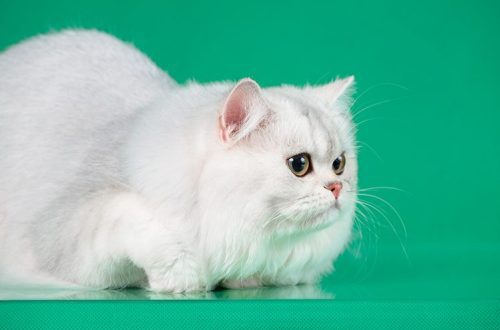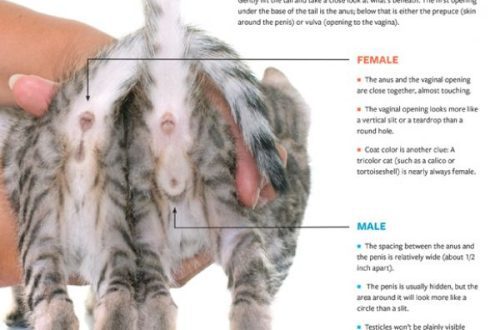
The most common diseases of cats
A pet is not only joyful moments of communication, but also a great responsibility. With constant and careful care of the animal, you can notice changes in her mood and poor health. What diseases are most common in cats and what you need to pay attention to – in this article.
Contents
The most common diseases
Cats, like humans, have their own list of diseases to which they are particularly susceptible. Some of them appear with age, some may be due to inappropriate / unbalanced feeding, and some are infectious diseases that can be contracted, for example, on the street. Diseases of cats is a vast topic, but there are basic, most common diseases.
1. Allergic reactions
The first symptoms of the disease are a dull, brittle coat, the appearance of bald spots and constant itching of the skin. Allergies can be manifested by redness on the skin, peeling and itching. An allergic reaction can be caused by:
- food intolerance to the components of the feed: carefully study the composition of the feed and consult with a veterinarian;
- contact hypersensitivity: household dust, house plants, detergents and tray filler, shampoo and more;
- hypersensitivity to flea, lice, tick bites;
- hormonal changes;
- bacterial infections.
2. Dermatitis
Dermatitis is most often not a separate disease of cats, but a symptom. Both indoor and outdoor cats suffer from dermatitis. If the cat itches, and small redness or pimples appear on the skin, this is probably a manifestation of dermatitis. There are many types of dermatitis. Most often, environmental factors become the cause of dermatitis: trauma, burns, infection or parasites.
3. Overweight
Overweight and obesity occur in 25-40% of cats. For each cat, you can calculate the ideal weight. Cats with reduced physical activity may gain extra pounds. Excess weight is associated with the risk of developing serious diseases of the cardiovascular system, diabetes, osteochondrosis and many others. It is important to carefully monitor the nutrition of your pet and not let her get fat. For each cat, you can calculate your ideal weight using Quick Reco. And your veterinarian can help you with this.
4. Diseases of the urinary tract
All pathologies of this group have similar symptoms: frequent and difficult urination in small portions, blood in the urine, soreness, impaired hygiene or lack of urination. If you observe these symptoms in your pet, you should consult with a veterinarian. Perhaps the refusal to visit the tray indicates problems with urination, and not at all about the bad behavior of the animal.
5. Otitis
Otitis among cat diseases is not so much an independent disease as a symptom of some kind of pathology. Otitis occurs:
- internal – inflammation of the inner ear;
- external – inflammation of the auricle;
- medium – inflammation of the tympanic cavity.
6. Infectious diseases: calcivirosis and panleukopenia
Calcivirus is a viral disease that affects the upper respiratory tract. Any cat that is not vaccinated on time can become infected. Panleukopenia, or feline distemper, is an acute viral infection that a pet can pick up on a walk, when in contact with a sick animal. Both diseases are highly contagious, so it is best to avoid walking outdoors, especially if the cat is not vaccinated.
What to look for
Any cat disease has specific symptoms that a caring owner will immediately pay attention to.
- The first symptoms of an allergy or dermatitis will be redness of the skin of the animal, dull coat, itching and peeling. Allergies and dermatitis are quite difficult to distinguish from each other, so you should contact your veterinarian for help.
- Overweight in a cat is immediately noticeable, but it is better to take it to a specialist for a control weighing. The veterinarian will give advice on weight loss and prevention of weight gain, as well as prescribe a diet and talk about the benefits of physical activity: perhaps playing ball in the evenings will help your pet regain its former harmony.
- Diseases of the urinary system are characterized by frequent trips, and sometimes the inability of the cat to go to the toilet. Many owners attribute the refusal to urinate to the behavior of the pet, but this is not always the case. If the cat experiences obvious discomfort when using the tray, she has lost her appetite and she is often not in the mood – you need to consult a doctor.
- Otitis media can be very severe, so look for the following symptoms: itching and redness in the pinna, the cat’s attempts to scratch the ears, excessive discharge, and bad smell from the ears.
- Calcivirosis and panleukopenia have many symptoms: refusal to eat, fever, vomiting, apathy. If you suspect an infection, you should immediately contact your veterinarian.
Do not treat yourself – for any symptoms of the disease, it is better to immediately contact a veterinarian. Some cat diseases and their symptoms can only be determined in a veterinary clinic with the help of research, and the course of treatment must be prescribed by a doctor. A quick, accurate diagnosis will speed up your pet’s recovery.
In any case, only competent prevention can be better than high-quality treatment. We must not forget about the correct balanced feeding, cat hygiene, exercise and timely vaccination.





